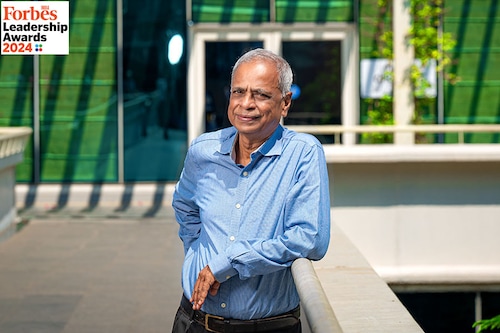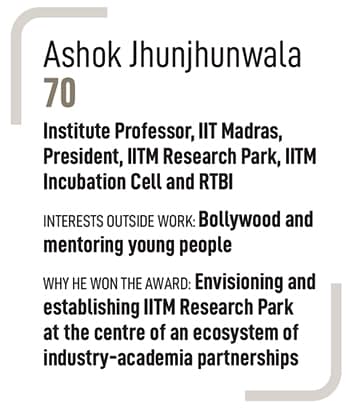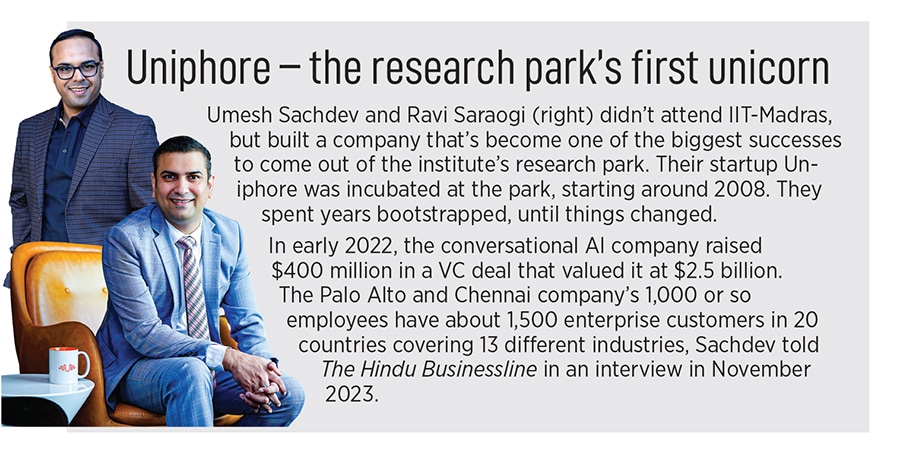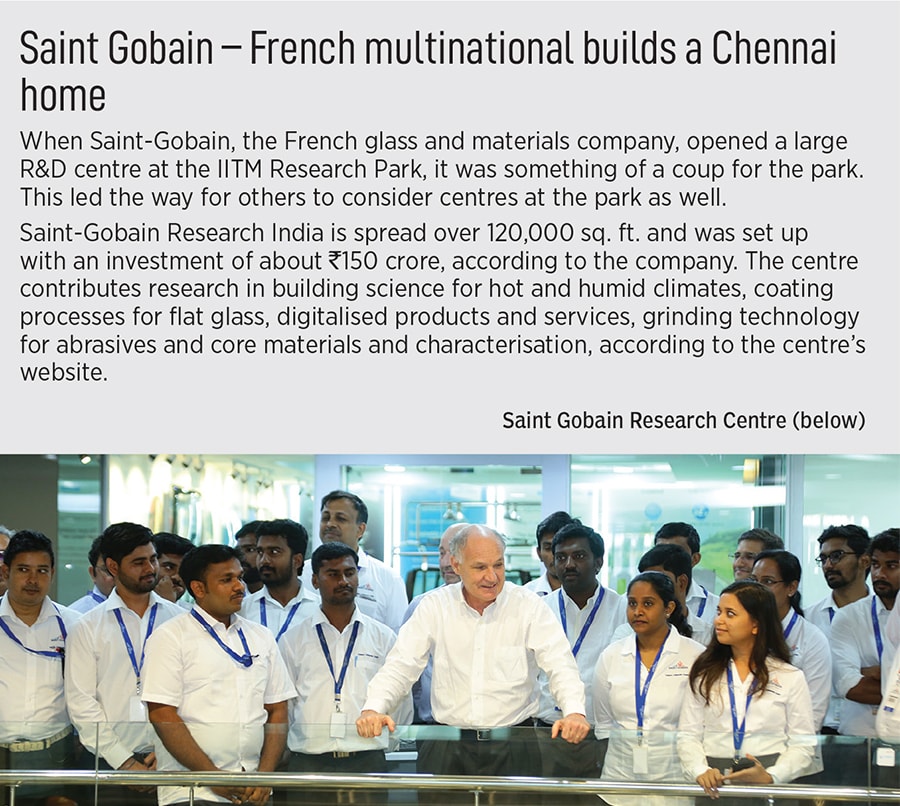Padma Shri Ashok Jhunjhunwala: The deep tech doyen
Professor Ashok Jhunjhunwala, winner of the Forbes India Leadership Award for Ecosystem Enabler, dreams of an India where world-leading hi-tech is built at home to always work for the masses


At one point, very early on after he came back from the US, Ashok Jhunjhunwala had thought he might need to get into politics to bring about the kind of changes he wanted to see in India. More than 40 years ago, it was an India where getting a telephone connection took years, with a waiting list of millions.
It was a good thing for India’s future deep-tech ecosystem that he quickly abandoned that idea, and instead joined the electrical engineering faculty at the IIT-Madras. He’s a graduate of IIT-Kanpur, with a PhD from America’s University of Maine.
The 70-year-old Padma Shri awardee has many achievements under his belt, in areas ranging from wireless telephony to mobile banking to solar equipment, and battery swapping for electric vehicles. His most enduring legacy, however, is the IITM Research Park he conceived and helped establish, and where he continues to scout the next big deep-tech startup.
“Almost all companies are deep-tech companies. I don’t even remember if there is any ecommerce company. We want deep-tech companies that really can make a difference," Jhunjhunwala says.
Promoted by the institute as a Section 8 not-for-profit company, the park has incubated about 350 tech startups, facilitated partnerships with some 150 Indian and foreign companies, and laid the foundations on which a vibrant deep-tech ecosystem can flourish over the next decade—the likes of which India has never seen.
 The research park almost didn’t happen. For years, the powers that be told Jhunjhunwala that there was no land for it. A chance meeting, on a flight, with the then chief secretary of the Tamil Nadu state government around 2005, got Jhunjhunwala a short audience with the then chief minister, the late Jayalalithaa.
The research park almost didn’t happen. For years, the powers that be told Jhunjhunwala that there was no land for it. A chance meeting, on a flight, with the then chief secretary of the Tamil Nadu state government around 2005, got Jhunjhunwala a short audience with the then chief minister, the late Jayalalithaa.
She liked his idea, which eventually got the professor enough land—in Jayalalithaa Film City— and grant money to build the first phase of the park, despite an election and change of guard at the state government in between.
Today the park has 1.2 million square feet of workspace in two phases built on 11.42 acres. Apart from the grant, the park paid back every rupee with interest, Jhunjhunwala says, of some ₹325 crore or so it borrowed in loans from banks, with overall expenditure to the tune of about ₹600 crore—the park is self-sustaining.
French constructions and materials giant Saint Gobain is among the large multinational companies with a strong presence at the park. Drug maker Pfizer is another.
As to the startups, today those the research park incubated are collectively valued at some ₹45,000 crore, Jhunjhunwala says. Among them are companies such as Uniphore, a conversational AI company that became a unicorn in 2022—the first among those incubated at the research park—and Ather Energy, one of India’s best-known electric scooter makers.
For those with a yen for a bit of history, the story of Tejas Networks, which Jhunjhunwala helped start up is instructional—is a rare, successful, hi-tech hardware maker from India. The Tata group acquired a controlling stake in the company in 2021.

The flip side of the story is perhaps why companies such as Tejas didn’t become much bigger. The story of corDECT, the wireless local loop technology that Jhunjhunwala’s team developed, offers some clues. This was before the research park happened. Jhunjhunwala had set up TeNeT Group (telecommunications and computer networks), which in the late 80s and early 90s did a detailed study of the telecom scene in India, and developed corDECT as an affordable home-grown alternative to the existing imported gear that cost ₹40,000 per line (in 1994) and required an ARPU of ₹1,000 for an operator to break even.
TeNeT’s ambition was of taking telephony to a 100 million households in 10 years, and internet as well. “There was a lot of opposition from all quarters," Jhunjhunwala, recalls. Worse, many didn’t even believe there could be an Indian-made piece of hi tech that was a world first, he says.
And yet, Midas Communication Technologies, which was also started at IITM and which was the commercial partner company for corDECT, had to go to faraway Madagascar to deploy the technology, when hurdles in India included denial of spectrum, the professor recalls. In 2001, the United Nations hailed corDECT as a breakthrough tech that held the potential to bring connectivity to the masses.
A deployment at the scale envisioned, however, didn’t happen, and Midas itself petered out, especially after India’s state-owned BSNL cancelled an order to buy more than a million units of its product, with corDECT under the hood, according to a report by Times of India from July 2012.
And mobile telephony and internet had arrived.

Those at TeNeT—who’ve carried on with its mission after Jhunjhunwala stepped back to focus on other areas including solar and the research park—and others they inspired have persevered. Today, more than 20 years after that deployment of corDECT in Madagascar, India can actually boast a small, but significant corpus of advanced knowhow in 5G wireless.
For example, Tata Consultancy Services is seeking to take a 5G radio developed by Saankhya Labs in Bengaluru to the US market. Saankhya was acquired by Tejas Networks in March 2022.
Parag Naik, Saankhya’s founder, is a strong believer that India should be investing early in 6G wireless. The acquisition of Saankhya is another symptom of the missing ecosystem in India that can support such a startup with advanced hardware capabilities to grow on its own.
“No one can believe that a brown skin could have developed this," Naik had said in semi jest, referring to the technologies Saankhya had developed, which included satellite modems for ISRO, in an interview with Forbes India, in May 2021, when he was still scouting for $20 million in funds as a startup.
That disbelief—a colonial hangover—is still around when it comes to deep tech in or from India, Jhunjhunwala says, while college dropouts are scoring unicorn status in ecommerce in the country.
What’s needed now, across the nation’s top science and engineering schools and universities is the next big decadal effort, Jhunjhunwala says. For example, make in India is good, he says, but we need to incessantly keep pushing to bring ever more higher value add tech to India, he says.

Or in semiconductors, the real hi-tech is controlled by a very small number of companies and we will always remain dependent on imports if we don’t develop our own knowhow. “At any time, a decision can be taken to deny us," he says.
Even in solar, what’s being done in India today is the more routine mechanical assembly of the final modules and panels—not the “fabrication of silicon solar from polysilicon, crystals and wafers to solar cell", which is all basically with China.
This all said, why Jhunjhunwala remains strongly hopeful is that the research park is proof that the status quo can change when you bring together the “wide knowledge" of academics, the ability of industry to turn science into products and the irrepressible energy of our youth.
The IITM Research Park model inspired IIT Bombay and IIT Delhi to establish their own research parks.
Jhunjhunwala may not have gotten into politics, but he certainly understood the need for intervention from influential personalities, such as Union power minister Piyush Goyal—who backed his direct current solar micro grid vision—or the respected banker N Vaghul, who’d once challenged him to build a rural ATM, which the don delivered, and many others.
Today again, “we need the next big push", he says.
First Published: Mar 13, 2024, 13:17
Subscribe Now